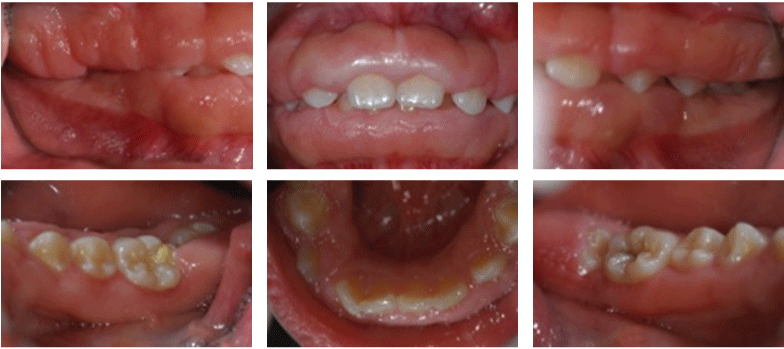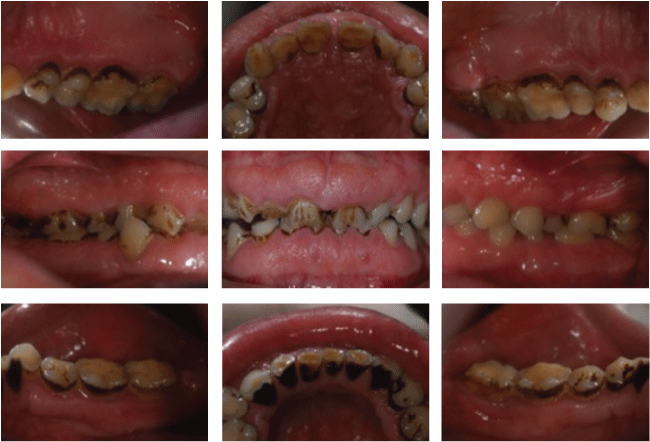Hereditary gingival fibromatosis, also known as congenital familial fibromatosis or idiopathic fibromatosis, is a rare genetic disorder with prevalence of 1/750000 [1,2]. This disorder may show as an isolated disease entity or as part of a syndrome [3,4]. As a single disease entity, it is typically transmitted as an autosomal dominant trait [5]. The main clinical features of hereditary gingival fibromatosis include severe generalized and progressive gingival overgrowth [6,7]. It can involve attachment gingiva, marginal gingiva and interdental gingival papilla, which always cover the teeth partially or completely. Gingiva are smooth, firm and usually normal in color. This disease usually appears during childhood and occasionally delays eruption of teeth [8,9]. The body and mental development of patients are normal [10]. The most important treatment for hereditary gingival fibromatosis is dental plaque control and elimination of gingival inflammation [11,12]. Gingivectomy is usually performed after adolescence [13].
We show a 12-year-old Chinese girl in this report. She has obvious gingival overgrowth since her birth. Her father (42-year-old) and his ancestors all had similar status. The girl's intraoral image is shown in Figure 1. Figure 2 shows her panoramic radiograph. Her father's intraoral image is shown in Figure 3.

Figure 1: Intraoral image of the patient

Figure 2: Panoramic radiograph of the patient.

Figure 3: Intraoral image of her father.